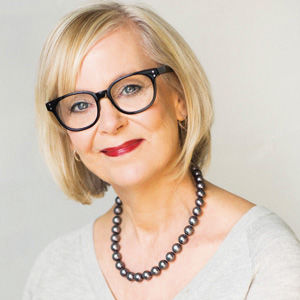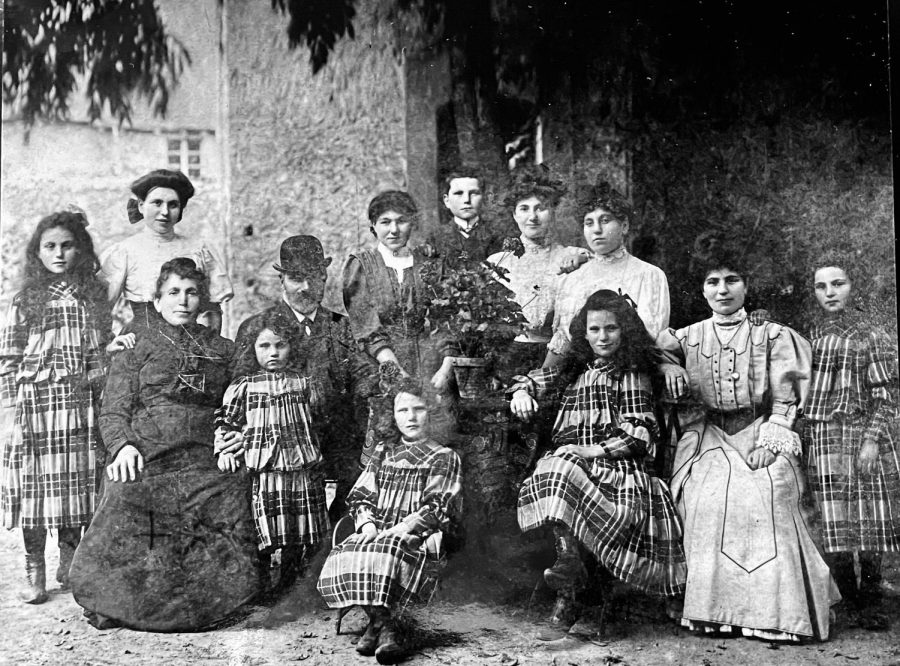There isn’t always two sides to every issue, as the Holocaust demonstrates
Published October 21, 2021
I remember distinctly the first time I saw this photograph, hanging in a huge frame over the mantel in cousin Susan’s house in Ann Arbor, Mich., 32 years ago.
That weekend the Neumann family had gathered from all over to celebrate her parents 50th wedding anniversary, Gertie and Alfred Strauss, two Holocaust survivors. (Some family members changed the spelling of Neumann to assimilate.)
I was still officially the “girlfriend” at the simcha, meeting more of my soon-to-be mishpocha (family), not knowing that one day later, I would become a “fiancé.”
Most of the girls in the photograph were killed by Nazis at the German Auschwitz-Birkenau extermination camp. Their spouses and children were also murdered just because they were Jewish. Great aunts and cousins we never had the chance to know.

The Holocaust scarred our family in unimaginable ways for decades. We purposely say the names of those we lost, even though our survivors, including my father-in-law, Marcel, his mother and siblings, never ever mentioned what they witnessed in Germany. We display the same haunting photograph in our homes.
The third girl from the left in the front row of the photograph, in her spunky schoolgirl pose full of confidence and attitude, has attracted me from the beginning. Amanda was brutally gassed with her husband and two young daughters as Auschwitz Nazi staff, young women and men partied, drinking and dancing late into the evenings.
Like many Jewish families, we will never truly know the pain of those who survived, horrors carried with them until the day they died. But it changed us — we who live to passionately tell their stories over and over until we die. My husband and I honored Amanda’s sister, survivor Oma Sophie, by naming our daughter Sophie after her brave great-grandmother.
Last week, a senior administrator in the Carroll Independent School District in Southlake, Texas, advised teachers to include multiple perspectives when discussing controversial historical events, as required by a brand-new state law, HB3979.
“Make sure that if you have a book on the Holocaust, that you have one that has an opposing, that has other perspectives”, she said during a training session for teachers on which books can be in classroom libraries. I became furious watching the secretly recorded video of her comments on national news.
However, this “both sides” concept isn’t new.
In 2014, a world-wide survey by the Anti-Defamation League of adults in 102 countries found that only 54% of those polled had ever heard of the Holocaust. That same year, eighth grade students in a California school district were asked to write an essay on whether they believed the Holocaust was an actual event.
We are still bone-chilled by the chant of “Jews will not replace us” at the extremist Charlottesville rally four years ago. Neo-Nazis with swastikas marched by yelling “Sieg Heils” as congregants at Congregation Beth Israel, the sole synagogue in Charlottesville, took the Torah scrolls, including one from the Holocaust, to a home for safekeeping after tense services.
Ugly antisemitism and the erasure of history has escalated in the United States for years. Still, it was horrifying to hear then-President Donald Trump in 2017 blame “very fine people on both sides” at the deadly Virginia rally.
“Bothsideism,” also known as journalistic fair balance, is a dangerous media tool often used to show opposing viewpoints, even when evidence shows otherwise. “Bothsideism” leads to false balance and perilous misinformation, particularly regarding historical events or attempting to downplay antisemitism.
In addition, I blame the popular notion of political compromise. As the lone Jewish member my final year in the state legislature, often immersed in intense floor debates, I refused to ignore anti-Holocaust education rhetoric, simply “to get along.” There can be no middle ground, concession or deal making for hate. Period.
I’ve seen the actual Nazi death logs inscribed with our family names at Yad Vashem, the Holocaust Memorial in Jerusalem.
I’ve seen the actual artifacts of the Auschwitz death camp, where Amanda died, on display at the groundbreaking international exhibition at Union Station in Kansas City.
I’ve seen the fear in our aunt’s handwriting, listing the death camps of Amanda and her sisters.
So, tell me the opposing view to teaching the Holocaust. Go ahead.
I’m ready for you.
Stacey Newman is the executive director of ProgressWomen, a statewide social justice group focused on justice and equality issues. She served nine years in the Missouri state legislature, representing a suburban district in St. Louis.















